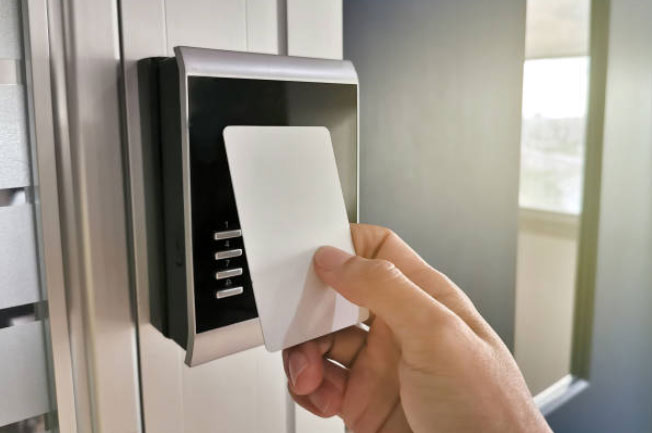125 kHz Proximity technology
125 kHz frequency, often referred to as proximity, is used for access control.
![]() ABOUT 125KHz
ABOUT 125KHz
Offers an affordable yet robust solution for entry-level access control
Our proximity card is ISO 7810 compliant, with a nominal thickness of .030". The card features a graphics quality surface optimized for Photo ID printing, and is available in standard PVC construction, or a composite polyester/PVC construction for more demanding high wear and tear environments.
Blanks stocked in both PVC or composite formula
Customization, such as pre-printing, magnetic stripe, signature panels, etc. are available.
Custom branding, shrink-wrapping in 100's and 100% visual inspection.

How does it work?
Contactless RFID
A proximity card or prox card is a contactless smart card which can be read without inserting it into a reader device, as required by earlier magnetic stripe cards such as credit cards and contact type smart cards. The proximity cards are part of the contactless cardtechnologies.
Prox cards use a low 125 kHz radio frequency to transmit to a door access reader. When the card is placed on the reader, the card's unique strand of numbers is passed to the access control panel, which verifies if the number matches an approved number in the internal database.
![]() Low Frequency FAQS
Low Frequency FAQS![]()
You Ask, We Answer
The facility code is usually a number between zero and 255. This number is assigned to your access control system. Along with the sequence number, the facility codes is programmed into each card. This combination of numbers, the facility code and card sequence, is read by the card read and checked against a database of assigned cards. If both the codes match, the door opens.
Unlike a sequence number, which must be unique to each card, the facility code is used on all your cards. An access control card reader may be able to read multiple facility codes. Your business may want to create a rule for assigning facility codes if you use more than one, for example code 50 for a New York office and 80 for an Los Angeles office.
Because you can use more than one facility code in an access control system, it is not required that your new cards have the same code as the old ones. If you do order cards with a new facility code, however, you will have to add it to your access control system.
For most card formats, your card range is numbers between zero and 65,535.
The card’s sequence or range number is programmed into it along with the facility code. The combination of both numbers are what tells a card reader which cards have access to the building – both the facility code and sequence number must match for the card to work. Because of this, it is incredibly important that cards do not have the same sequence number; because they have the same facility code and sequence number, the system cannot tell the cards apart. When you order new cards, order the cards in the next range of numbers.
For example, if your current box of cards ends with sequence number 120, your next cards should start with sequence number 121.
If your organization needs a large number of cards, you have several options.
First, you can set up your system to use more than once facility code. This would require card readers than are compatible with more than one facility code. Using this method, you could have the full range of zero to 65,535 under each facility code. The cards would not be identical because their facility code AND sequence numbers do not match.
Second, you can register your cards with other bit-pattens such as 35-bit or 37-bit HUGE (no facility code). These formats allow you a greater range of card numbers, up to 34,359,738,367.
The term Wiegand is applied to several characteristics related to access control readers and cards. Unfortunately, the word is used carelessly and can lead to unnecessary confusion. Here are the basics.
Wiegand is:
1. A specific reader-to-card interface
2. A specific binary reader-to-controller interface 3. An electronic signal carrying data
4. The standard 26-bit binary card data format 5. An electromagnetic effect
6. A card technology
We will need to know the format (bit-pattern), facility code and starting number. You can often find this information on the box from a previous order. If not, please request that the information is provided for every order. Tracking you numbering sequence if critical to avoid duplicate numbers.
No. The low frequency technology operates at a carrier frequency of 125 kHz. NFC operates at 13.56 MHz. Consequently, it's impossible to read proximity cards with an NFC reader (and vice versa).
Our Location
1370 Rochester Street
Lima, New York, 14485
Working Hours
M - F
8:00 – 5:00 (pst)
